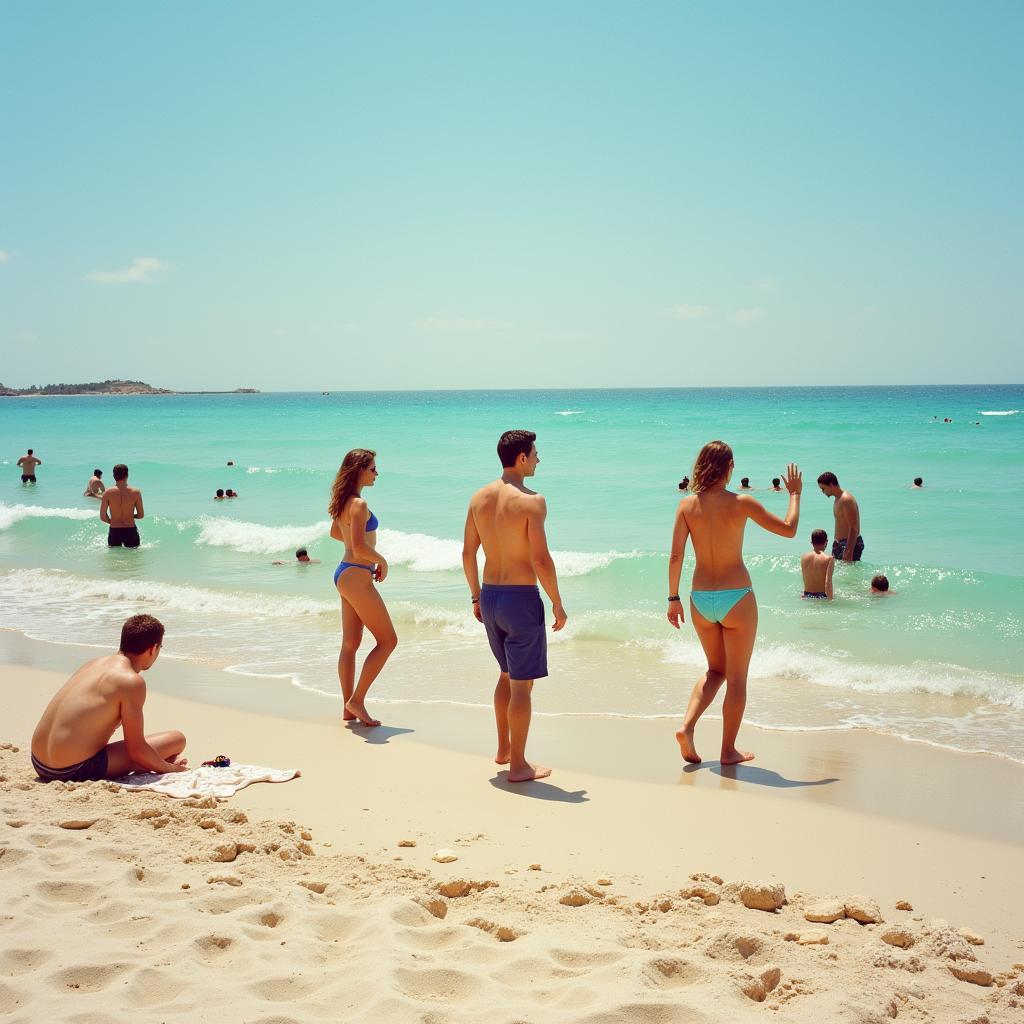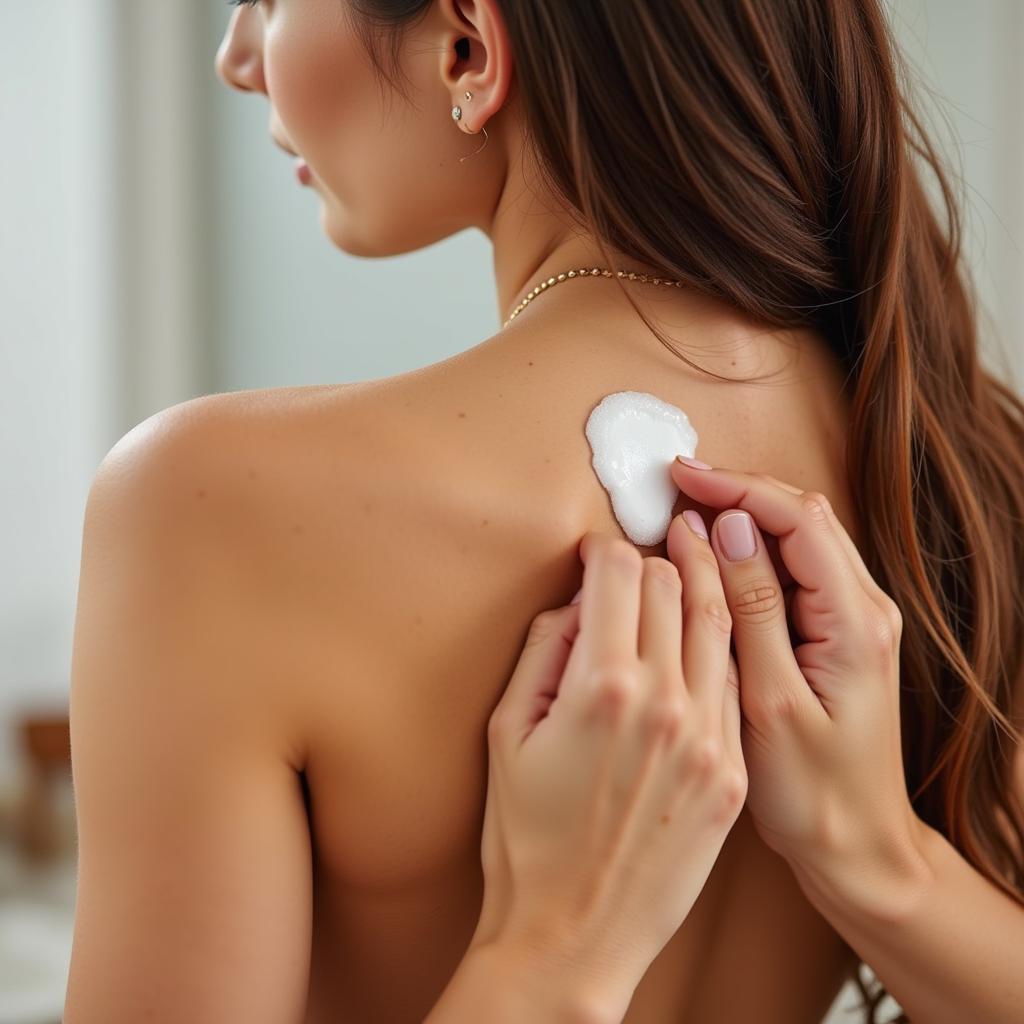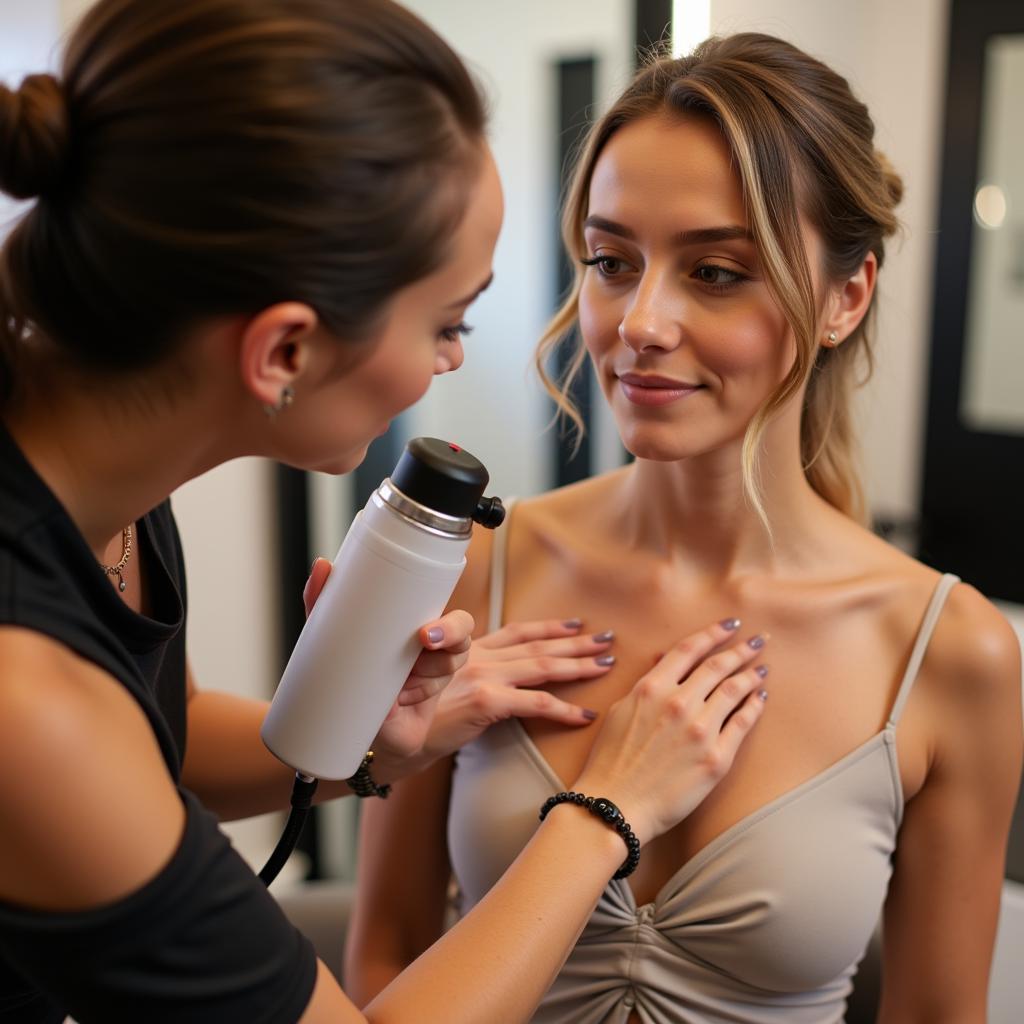Nude tanning, also known as naturist tanning or all-over tanning, involves sunbathing or using tanning beds without wearing any clothing. It’s a practice embraced by individuals seeking an even, all-over tan without tan lines.
 People sunbathing nude on a beach
People sunbathing nude on a beach
What are the Benefits of Nude Tanning?
Proponents of nude tanning often cite several benefits, including:
- Even Tan: Without clothing acting as a barrier, sunlight or UV rays from tanning beds reach all areas of the skin, resulting in a uniform tan.
- Vitamin D Production: Sun exposure facilitates the body’s production of vitamin D, which plays a vital role in bone health and immune function.
- Natural Experience: For some, nude tanning aligns with a naturalistic approach to their body and a sense of freedom.
Are There Risks Associated with Nude Tanning?
While nude tanning offers potential benefits, it’s crucial to acknowledge and address the associated risks:
- Sunburn: Prolonged and unprotected sun exposure can lead to sunburn, a painful condition characterized by red, inflamed skin.
- Premature Aging: UV radiation from the sun is a primary contributor to premature skin aging, leading to wrinkles, age spots, and a leathery texture.
- Skin Cancer: Excessive sun exposure is a significant risk factor for skin cancer, including melanoma, the deadliest form.
 A woman applying sunscreen to her back while nude tanning
A woman applying sunscreen to her back while nude tanning
How Can I Tan Nude Safely?
If you choose to tan nude, prioritize safety by following these essential guidelines:
- Gradual Exposure: Begin with short periods of sun exposure and gradually increase the duration over time, allowing your skin to adapt.
- Sun Protection: Apply a broad-spectrum sunscreen with an SPF of 30 or higher to all exposed skin, even on cloudy days. Reapply every two hours, especially after swimming or sweating.
- Seek Shade: Limit direct sun exposure during peak hours (typically between 10 am and 4 pm) when UV rays are strongest.
- Stay Hydrated: Drink plenty of water throughout the day to stay hydrated, especially during and after sun exposure.
- Check Your Skin Regularly: Examine your skin regularly for any new or unusual moles, freckles, or growths. Consult a dermatologist if you notice any changes.
Nude Tanning: Considerations and Alternatives
Before engaging in nude tanning, it’s important to consider:
- Legal Restrictions: Laws regarding public nudity vary significantly depending on location. Always be aware of and respect local regulations.
- Personal Comfort: Nude tanning is a personal choice. Ensure you feel comfortable and safe in your chosen environment.
Alternatives to Nude Tanning:
- Tanning Beds: Tanning beds offer a controlled UV environment but still pose risks of skin damage and should be used cautiously.
- Spray Tans: Spray tans provide a temporary, UV-free alternative for achieving a tanned look.
 A woman getting a spray tan in a salon
A woman getting a spray tan in a salon
Conclusion
Nude tanning can provide an even tan and a sense of freedom, but it’s essential to prioritize skin safety. By understanding the risks, following safety guidelines, and considering alternatives, you can make informed decisions about your tanning practices.





